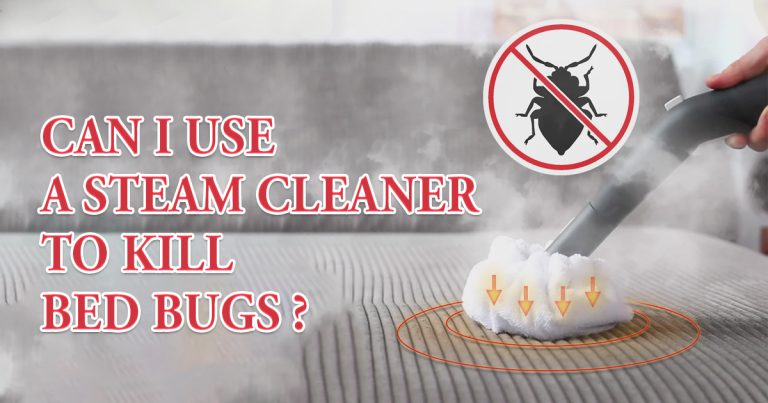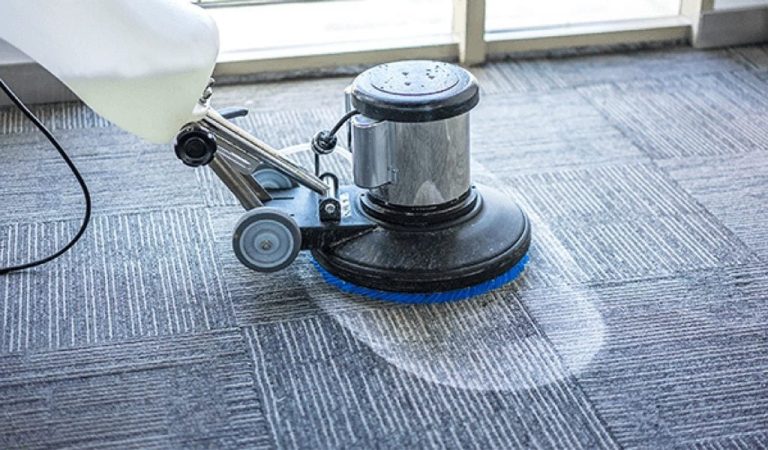Table of Contents
How to clean out a potting soil stain Spills on Carpets
Plant enthusiasts know the joy of maintaining greenery indoors. However, an unnoticed plant water spill on your carpet can quickly turn disastrous if not addressed immediately. Here’s why:
Prevent Water Damage and Mold Growth
- Safeguard Your Carpet’s Longevity: Water left sitting on carpet fibers can weaken them over time, resulting in premature wear and requiring costly replacements.
- Avoid Stubborn Stains: Soil and minerals in plant water can lead to tough stains if absorbed. Immediate blotting can stop these from setting in permanently.
- Stop Mold and Mildew in Their Tracks: Damp conditions are the perfect breeding ground for mold and mildew. These not only ruin your carpet aesthetically but can also compromise indoor air quality, affecting health negatively.
- Protect Indoor Health: Mold spores can cause allergies and respiratory issues. By managing spills promptly, you’re ensuring a healthier living environment.
To handle spills effectively, quickly blot the area with a towel to soak up excess water. Use a fan or dehumidifier to further dry the carpet, and consider a light cleaning solution for any residual stains. Remember, prompt action not only preserves your carpet’s beauty but also contributes to a healthier home atmosphere.
You may also like to read: How does one clean crayon out of a carpet?

When Plants in Pots are Knocked Over on the Carpet?
When it comes to spot cleaning the carpet, the first thing that comes to mind is to take a liquid solution and begin scrubbing or blotting. This is the very worst thing you could possibly do with potting soil.
To begin, get a spoon and carefully scrape the surface of the dirt to loosen any particles. Using a liquid solution will result in the formation of mud on the carpet, which will result in a greater mess and additional effort. Use a professional carpet cleaning service if required.
Understanding Stains and Residues from Plant Water and Soil
Carpets are especially vulnerable to plant-related mishaps—whether it’s a pot knocked over or water seeping through drainage holes. Plant water stains often form when moisture escapes from pots without trays or spills over, soaking into carpet fibers. The water carries minerals and sediment, and if left unattended, this moisture can cause discoloration and even set permanent stains.
When dealing with stains from plant water and soil, it’s important to recognize the specific challenges each presents on carpets.
1. Water-based Stains:
Plant water often leaves behind unsightly watermarks or patches of discoloration on carpet fibers. These stains occur because water can seep into the carpet, disrupting the fiber’s natural alignment and causing light to reflect differently.
2. Soil Residue:
Spilled soil is another concern, as it can lead to dirt buildup and leave a gritty residue. Soil particles tend to embed deeply into the fibers, making them challenging to remove with standard cleaning methods. Unlike surface dust, potting soil often contains organic material and minerals that can cling stubbornly to carpet piles, creating lasting dark marks if not handled correctly.
Plant watering mishaps and soil spills might seem daunting, but understanding how water and soil interact with carpet fibers is the first step to restoring your carpet’s appearance. By tackling both types of residue appropriately, you can prevent lasting damage and keep your carpet looking its best.
Effective Treatment
To tackle both these issues, consider employing dual-action cleaning methods. For watermarks, drying the area thoroughly and treating it with a mild carpet cleaner can help restore its appearance. Meanwhile, for soil stains, a deep-cleaning vacuum or a carpet stain remover with soil-extracting properties will be more effective.
Breaking the cleaning tasks down into specific actions ensures you address the root of each stain, maintaining your carpet’s longevity and appearance.
Practical Steps for Cleaning Plant Water and Soil Stains
- Act quickly: The faster you address plant water spills, the less likely they are to cause water damage or encourage mold growth. Speed is key to success.
- Avoid over-saturating: When cleaning, don’t drench the carpet with your cleaning solution. Excess moisture can soak into the padding, leading to long-term moisture problems and even mold.
- Test cleaning solutions: Before applying any natural or commercial cleaner, test it on a small, hidden patch of carpet to ensure it won’t cause discoloration or damage.
The residual soil on the carpet should be allowed to dry out completely throughout the course of the night. You can skip to the next step in the process if the soil in the potted plant is already somewhat dry.
While you are waiting for the area to blot dry, you should make sure to partition off the area that is dirty with carpet stains. You don’t want someone to tread on it and make an even bigger mess in other parts of the carpet, so keep everyone away from it and blot the area.
When the soil has reached the desired level of dryness, take the vacuum hose in hand and work slowly to gather as much of the soil’s loose particles as you can.
After you have vacuumed up as much dirt as you possibly can, it is time to make a liquid solution consisting of mild dishwashing liquid and water and blot in order to remove any stains that may still be there. How to clean out a potting soil stain Bring out your industrial vacuum cleaner if it has a more powerful suction than your typical vacuum cleaner for the home since now is the perfect moment to utilize it.

After you have vacuumed up as much dirt as you possibly can, it is time to make a liquid solution consisting of mild dishwashing liquid and water and blot in order to remove any stains that may still be there. Applying gentle pressure with a clean white cloth, remove dirt spots.
Issues with Watering Houseplants on Carpeted Floors
Watering houseplants on carpeted areas can lead to several problems that might affect both the carpet and the surrounding environment.
1. Water Stains: When houseplants are watered without protective trays underneath, or if water spills from the pot, it can seep into the carpet. This moisture can result in unsightly water stains, particularly if the water contains sediment.
2. Discoloration: Carpets may become discolored over time due to prolonged exposure to dampness. This is particularly true if the water contains minerals or other compounds that leave a lasting mark once the water evaporates.
3. Odor Development: Lingering moisture can lead to unpleasant odors as the damp carpet becomes a breeding ground for mold and mildew, both of which thrive in moist environments. This can impact indoor air quality, contributing to an unwelcoming atmosphere.
4. Mold and Mildew Growth: Persistent moisture trapped in carpet fibers provides the perfect environment for mold and mildew to flourish. Beyond the potential health risks, these can significantly damage the carpet’s structural integrity.
5. Carpet Damage: If left unaddressed, the repeated exposure to water can weaken carpet fibers. This deterioration may lead to premature wear and tear, necessitating costly repairs or even carpet replacement.
Protect your carpets by using trays, taking care during watering, and promptly addressing any spills to maintain both their appearance and longevity.
Precautions When Using Natural Cleaning Solutions on Carpets
When tackling Potting soil stain with natural cleaning solutions, it’s crucial to proceed with caution to preserve the look and longevity of your carpet. When dealing with any stains on your carpet, it’s important to act quickly and use the appropriate cleaning solution to prevent permanent damage. Here are some key precautions to keep in mind:
- Prompt Action Matters
Address spills immediately to mitigate potential damage. This quick action helps to minimize the risk of lasting stains, mold growth, and water damage. - Mind the Moisture
Ensure that you’re not over-applying cleaning solutions. Too much liquid can lead to moisture retention issues, ultimately harming your carpet’s fibers and potentially fostering mold. - Spot Test for Safety
Always conduct a spot test with your chosen natural cleaner. Apply it to a discreet section of the carpet before treating the stained area. This helps confirm the solution won’t cause discoloration or other unwanted effects.
By following these simple yet effective steps, you can achieve cleaner carpets without compromising their quality or appearance.
How to Remove Water Stains from Carpets Caused by Plants
Water stains on carpets can be a nuisance, especially if they’re left by beloved houseplants. For blood stains, cold water is your best friend—gently blot the area with a clean cloth to lift the stain without spreading it further. Fortunately, you can tackle these stains with a few simple steps. Here’s how:
- Absorb Excess Moisture
Begin by gently blotting the stained area with a clean, dry cloth or towel. This will help soak up any remaining moisture, which is crucial to preventing further spread. - Prepare a Vinegar Solution
Mix a solution using one part white vinegar and two parts water. Vinegar is a natural stain remover and works wonders in neutralizing water marks without damaging carpet fibers. - Apply the Solution
Dampen a clean cloth with your vinegar mixture and gently blot the stained area. Be cautious not to saturate the carpet, as this can lead to mold growth. - Repeat and Dry
Continue blotting and reapplying the solution until the stain lightens or disappears. Once satisfied, let the area air dry completely. Placing a fan nearby can speed up this process.
Using these straightforward steps, you can quickly restore your carpet to its former glory. Not only is this method effective, but it’s also eco-friendly.
You may also like to read: How often should I vacuum my all carpets home?
Once the stains have been removed from the carpet fibers, use a new, clean towel and just a cup of warm water to rinse the soap solution out of the item. If there is still any filth after cleaning with a soap solution, you might try washing it again.
To hasten the drying process and ensure that the carpet is not damaged, use a third towel or some paper towels over the damp spot. Red wine stains can be tough, but blotting with a mixture of white wine and dish soap can help neutralize the stain and prevent it from setting. It is recommended to weight down this fabric with a heavy item in order to assist in the absorption of the moisture and vacuum the area.
It is a good idea to hire a professional carpet cleaner if you have stubborn potting soil that will not come out of your carpet even after you have tried the dish solution a few times, especially if the dirt has been there for a while. If you accidentally spill paint on your carpet, act fast by scraping off excess paint and then applying a mixture of dish soap and warm water to gently clean the area.

Steps to Remove Stubborn Water Stains from Carpet
Dealing with a persistent water stain on your carpet can be frustrating. Follow these steps to effectively tackle the issue and say goodbye to unsightly marks:
- Blot and Dry: Start by blotting the stain with a clean, dry cloth to absorb any remaining moisture. Remember, avoid rubbing to prevent further spreading.
- Apply Vinegar Solution: Mix one part white vinegar with two parts water and apply it to the stain using a spray bottle. Gently blot with a clean cloth to lift the stain.
- Use Baking Soda: Sprinkle a generous amount of baking soda over the affected area. Let it sit for at least 30 minutes to absorb odor and moisture. Then, vacuum thoroughly.
- Try Commercial Stain Removers: If the stain persists, apply a commercial carpet stain remover according to the product instructions. Look for products that target water-based stains.
- Consider Oxalic Acid: As a last resort for stubborn stains, consider using a mild solution of oxalic acid. Always perform a spot test on an inconspicuous area and follow the manufacturer’s safety guidelines.
- Rinse and Dry: After treatment, make sure to rinse the area with clean water and dry it thoroughly to prevent mildew or mold.
By following these detailed steps, you can enhance your carpet’s appearance and extend its life without the need for professional intervention.
Conclusion
Dealing with How to clean out a potting soil stain, especially from plant water or soil, may seem like a small issue, but if left untreated, it can lead to significant problems such as mold growth, discoloration, and permanent damage. Swift action is essential to prevent these complications and keep your carpets looking fresh and clean. To effectively remove water from your carpet, blot the area to soak up excess moisture, then use a fan or dehumidifier to speed up the drying process. While home remedies such as vinegar solutions and baking soda can be effective, sometimes the stubborn stains may require the help of a professional carpet cleaning service.
A professional cleaning service like Dirt2Tidy can ensure your carpets are properly treated, eliminating stains and preventing long-term damage. Our experienced team uses advanced cleaning techniques and equipment to restore your carpets to their original condition. Whether you’re dealing with a plant water spill or more persistent stains, we’ve got you covered.
Get a free quote from Dirt2Tidy today and let our expert cleaners handle the hard work while you focus on your move. We’ll take care of your carpets, ensuring they are fresh, clean, and mold-free. Don’t let spills and stains take a toll on your home contact us now to schedule a cleaning service that works for you.



